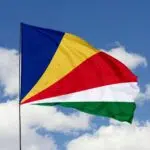Internal Autonomy Day is observed on June 29 every year in French Polynesia. It honors Tahitian and French Polynesian self-rule. Additionally, it marks the annexation of the Kingdom of Tahiti and the handover of control to France by King Pomare V. While many political parties celebrate the day with festivities, some also believe it should be a day of mourning instead. Nonetheless, celebrations happen mainly in the national capital of Papeete and include parades, entertainment, and concerts. The actual date French Polynesia achieved internal autonomy was September 6, 1984.
History of Internal Autonomy Day
French Polynesia is an overseas collectivity of France. It consists of 121 islands and atolls that stretch over an area of around 1,200 miles in the South Pacific Ocean. It is believed that the islands were inhabited around 1500 B.C. when Austronesian peoples journeyed across the Pacific Ocean during the Great Polynesian Migration. In about 200 B.C., the Marquesas Islands were the first French Polynesia islands to be settled. Further voyages southwest led to the discovery of the Society Islands around 300 A.D.
The first European contact with the region was in 1521 when Portuguese conquistador Ferdinand Magellan sighted Puka-Puka in the Tuāmotu-Gambier Archipelago. The first European settlement in French Polynesia came in 1774 when the Spanish set up a base. Christian missions to Tahiti began soon after, many settling permanently from as far back as 1797. French Catholic missionaries arrived in Tahiti in 1834 and by 1842, Tahiti and Tahuata were declared French protectorates.
After many years of annexation, Polynesians were granted French citizenship in 1946, and the islands were deemed overseas territory. In 1957, the French changed the islands’ name to Polynésie Française. In 1977, French Polynesia was granted partial internal autonomy, and by 1984, it achieved complete internal autonomy. As a result, Internal Autonomy Day is observed on June 29 every year. It honors Tahitian and French Polynesian self-rule. Additionally, it marks the annexation of the Kingdom of Tahiti and the handover of control to France by King Pomare V. While many political parties celebrate the day with festivities, some also believe it should be a day of mourning instead. Nonetheless, celebrations happen on June 29 mainly in the national capital of Papeete, and include parades, entertainment, and concerts.
Internal Autonomy Day timeline
French Polynesia is settled by migrating Austronesian peoples.
French missionaries arrive in Tahiti.
Polynesians are given French citizenship.
French Polynesia achieves internal autonomy on September 6.
Internal Autonomy Day FAQs
Is French Polynesia part of France?
Yes. It is still an overseas French territory.
What language is spoken in French Polynesia?
While many languages are spoken in the region, French remains the official language.
Is Hawaii part of Polynesia?
No. Hawaii is deemed a U.S. state.
How to Observe Internal Autonomy Day
Research the history
Go online and read up on how French Polynesia came to be what it is today. You’ll be fascinated by the history.
Read French Polynesian literature
Read French Polynesian literature. It’s a great way to understand the desire for autonomy and independence.
Learn about pro-independence sentiments
There is a section of French Polynesian society that is still aiming for complete independence. Learn more today.
5 Fascinating Facts About French Polynesia
The volcanic effect
Tahiti, the largest island, is formed from two ancient volcanic cones.
The alphabet is short
There are 13 letters in the Tahitian alphabet.
Half-way mark
French Polynesia is located in the South Pacific Ocean halfway between California and Australia.
Tattoo, anyone?
The word ‘tattoo’ comes from the Tahitian ‘tatau.’
No poisonous creatures
There are no poisonous snakes or insects in French Polynesia.
Why Internal Autonomy Day is Important
It marks an important moment in history
Internal Autonomy Day marks an important part of the region’s history. It’s an opportunity to share in the experiences and struggles of others.
It highlights the desire for self-rule
Many colonized nations across history have fought for the right to self-rule. Internal Autonomy Day highlights how important that desire can be for a people.
It’s a reminder
French Polynesia continues to be owned by France, despite calls for independence. Internal Autonomy Day is a reminder that French Polynesia remains colonized.
Internal Autonomy Day dates
| Year | Date | Day |
|---|---|---|
| 2026 | June 29 | Monday |
| 2027 | June 29 | Tuesday |
| 2028 | June 29 | Thursday |
| 2029 | June 29 | Friday |
| 2030 | June 29 | Saturday |






















